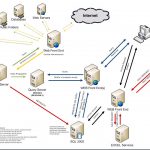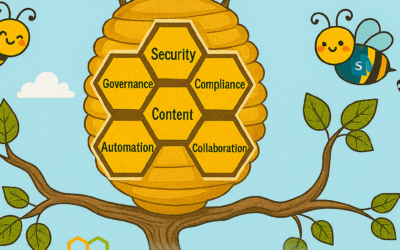In SharePoint, there are topology concepts to understand and consider. Servers have roles such as Web, Query, Index, Calculation, Application, and Database. Farms have relationships such as Authoring, Publishing, Development, Test, Staging, and Production as well as service applications covering Search, Profile, Access, Business Data Connectivity, Excel, Machine Translation, Managed Metadata, PerformancePoint, Secure Store, Word Automation, Work Management, Usage/Health, Visio and others. In a SharePoint farm, SharePoint is comprised of Servers, Web Applications, Databases, Site Collections, Sites, Lists, and Items (and in that order from a hierarchical perspective in that order).
The concept of this is difficult to describe graphically, and especially if you are going to design a topology for a customer you will need a good approach. I use Visio for designing topology diagrams, and I managed to get a couple of documents that provides an overview of topology concepts for SharePoint 2013. These are pretty good, if you need to understand the topology and therefore some other concepts such as performance, scale, fault tolerance, etc. These diagrams include topologies, based on the traditional approaches to building SharePoint architectures in these documents.
They are available for download here:
PDF: http://www.geoffevelyn.com/downloads/sps_2013_traditional_topology_model.pdf
VISIO: http://www.geoffevelyn.com/downloads/sps_2013_traditional_topology_model.vsd
I have been asked a lot about the actual process of upgrade from SharePoint 2010 and whether there is any best practice material. Yes there is, and its pretty good! This model explains the process that you use when you upgrade from SharePoint Foundation 2010 or SharePoint Server 2010 to SharePoint Foundation 2013 or SharePoint Server 2013.
They are available for download here:
PDF: http://www.geoffevelyn.com/downloads/sp2013-upgrade-process.pdf
VISIO: http://www.geoffevelyn.com/downloads/sp2013-upgrade-process.vsd
The article is located here: http://www.microsoft.com/en-gb/download/details.aspx?id=30371









